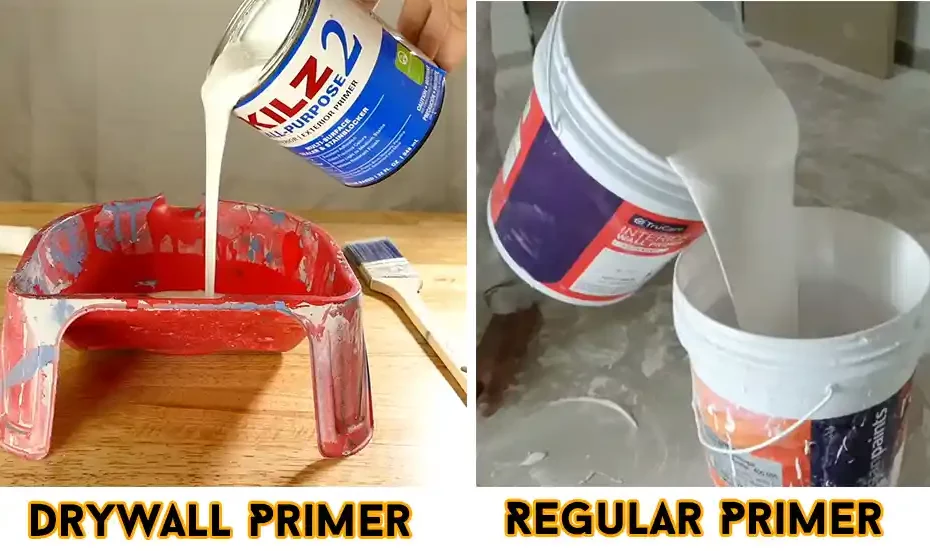Last Updated on September 14, 2023
To achieve a professional-looking paint job, the choice of primer is just as important as the choice of paint.
Drywall primers and regular ones don’t always work in every situation, so it’s important to understand how they’re both different before taking on any home project.
A drywall primer is designed to seal new drywall surfaces, while regular primers are designed for use on previously painted surfaces.
Both drywall and regular primers provide excellent adhesion and surface protection, but each has its own specific benefits that may make one type best suited for certain jobs, depending on what you’re painting.
Our easy-to-understand guide breaks down these two types of primers, so you can make an informed decision with confidence. Learn the differences between them and all their potential benefits in no time.
Purpose of Using Drywall Primer Vs Regular Primer
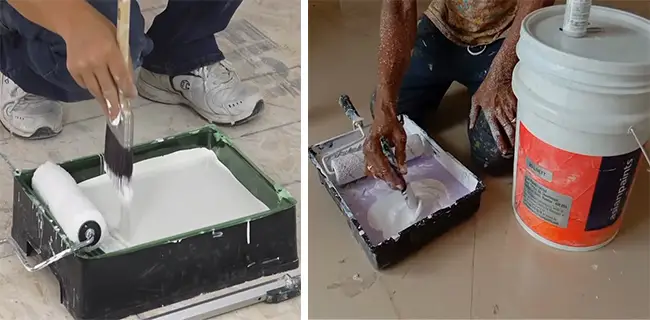
Drywall Primer
The purpose of using drywall primer is to create a protective seal on new drywall surfaces that prevents moisture, mildew, and stains from penetrating the wallboard and creating long-term damage. In addition, drywall primer also creates a smooth surface that makes it easier to apply paint or wallpaper and improves adhesion.
It can also provide an even base color to reduce the number of coats of paint needed. Furthermore, drywall primer is designed to help fill in patches or minor imperfections in the wallboard surface, so your finish coat looks more uniform and professional.
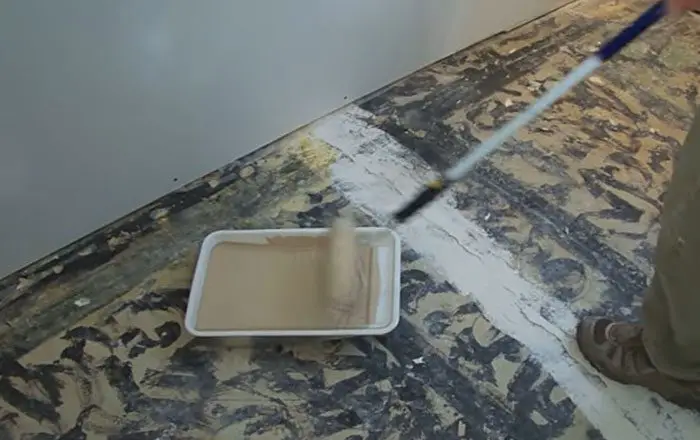
Regular Primer
The purpose of using a regular primer is to create a bond between the substrate material and the topcoat for better adhesion, improved durability, and improved coverage when painting. Regular primers help block stains from coming through the topcoat as well as provide some mildew resistance.
They come in different formulations for specific types of substrates such as wood, metals, stucco, plastic, masonry, and other materials and come with stain-blocking properties that make them ideal for a variety of applications.
Additionally, due to their unique composition, regular primers can be used for both interior and exterior applications depending on what type you choose, making them extremely versatile products when it comes to home improvement projects.
Types of Regular Primers and Drywall Primers
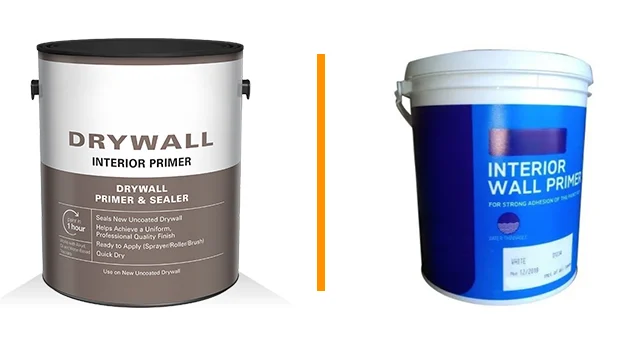
Regular primers are basic paint primers that are used to create an even and clean surface on walls that have been recently painted. They are typically made of acrylic latex and come in both oil-based and water-based varieties.
Depending on the desired result, regular primers can also be formulated with different opacity levels. Regular primers are generally applied before applying a top coat of paint and help to seal the surface, block odors, and provide an even base for paint application.
Drywall primers are specialized paints that adhere well to drywall surfaces, creating a foundation for paint that will make adhesion easy and hold up better over time.
Drywall primers usually contain latex resins which help them bond better to drywall surfaces. Drywall primers help reduce common problems such as bubbling or flaking due to water damage or poor wall preparation before painting.
There are several types of regular primer products available on the market today, including alkyd-based, latex-based, shellac-based, tar epoxy-based, and waterborne solutions. Alkyd-based primers work best on wood surfaces, while latex-based solutions work best on masonry surfaces such as brick or stucco walls.
Shellac-based products have excellent adhesion properties but should not be used indoors as they emit fumes. Tar epoxy primer is extremely durable but requires multiple coats for full coverage and should only be used outdoors due to its high toxicity levels.
Waterborne solutions provide nonflammable options for those concerned about safety hazards associated with traditional oil-based products. The use of these products depends mainly upon the type of surface being covered, as some may not be suitable for specific substrates such as particleboard or polystyrene insulation board (PSIB).
When it comes to drywall primer types, there are two main categories. Oil-based and water-based solutions. Oil-based varieties tend to provide better coverage over raw drywall but must be applied carefully due to their strong odor and potential fire hazard when used indoors without proper ventilation.
Water-based solutions offer more protection from moisture than oil-based solutions but may require multiple coats for full coverage on highly textured walls. Especially if using multiple colors within one area of the wall space.
Both types of primer should always be top-coated with a quality paint finish to ensure maximum durability over time, regardless of substrate type.
Select the Right Primer for Your Needs
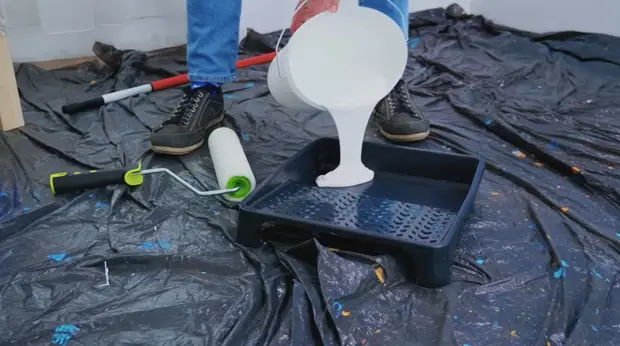
Choosing the right primer for a project, whether it be residential or commercial, is essential for achieving the desired outcome. Primers are designed to provide a base layer that not only seals out moisture and other contaminants but also helps create an ideal surface for optimal adhesion of paint, sealants, and adhesives.
With so many types of primers available, how do you select the best one for your needs? Here are some considerations when choosing a primer for both residential and commercial projects.
Residential Projects
When selecting a primer for residential projects, consider factors such as the type of material to be primed, desired durability and coverage, environmental conditions or exposure to water or humidity, and any other particular needs or preferences.
Different types of primers may be better suited for different materials, including wood, metal surfaces, drywall or plaster surfaces, masonry walls and surfaces, fiberglass, concrete surfaces, vinyl siding, and windowsills.
Some primers may also be specifically formulated to resist weathering elements such as UV rays or excessive moisture (for example, mildew-resistant primers). Additionally, one should consider what kind of finish they seek in terms of glossiness. A glossier finish will require more coats than one with less luster.
Commercial Projects
For commercial projects, there are additional considerations when choosing a primer, such as safety requirements (for example, lead-based paint removal), chemical resistance (if cleaning chemicals will come into contact with the surface), and fire resistance ratings (if necessary).
Beyond these technical needs, there may also be aesthetic goals to achieve in terms of color-match blending capabilities with other surfaces already existing on site. One should also factor in their budget when selecting a primer, as some products may carry higher costs but offer better solutions than cheaper models.
Furthermore, if dealing with multiple substrates over larger areas, then it is important to make sure that the chosen primer can adhere well across all surfaces being primed. Otherwise, there could be costly delays due to incompatibility concerns. between primers and substrates.
In summary, deciding on the ideal primer for a residential or commercial project requires taking into account several factors, including material type being primed; desired durability and coverage; environmental exposure; safety requirements; chemical resistance; fire resistance ratings; color matching or blending capabilities; budget restraints; adhesion properties across multiple substrates over larger areas; and aesthetics goals.
By considering all these elements carefully, one can select the best primer that meets their needs while avoiding delays that can be costly due to incompatibility issues later down the line.
Can You Use Drywall Primer On Other Surfaces?
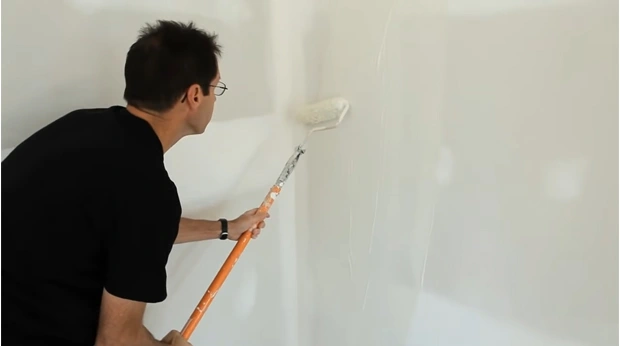
Drywall primer is designed specifically for drywall surfaces. However, it can be used on other surfaces, such as plaster and wood. When using drywall primer on other surfaces, it is important to ensure the surface is clean and free of dirt or grease before application.
Additionally, if the surface has pores or cracks, these should be filled before priming. The number of coats necessary will depend on the properties of the surface being painted and how much water or moisture is present.
Can You Use Any Primer For The Walls?
When selecting a primer for walls, there are many factors to consider. Depending on the type of walls you have (drywall, plaster, wood) and what kind of paint you will apply afterward (latex, oil-based, etc.).
There are different types of primers available that offer different benefits suited for each application. For example, latex primers provide better adhesion and sealer coatings for drywall. While solvent-based primers provide better adhesion and stain-blocking capabilities for wood and concrete substrates.
How Many Coats Of Drywall Primer Do You Need?
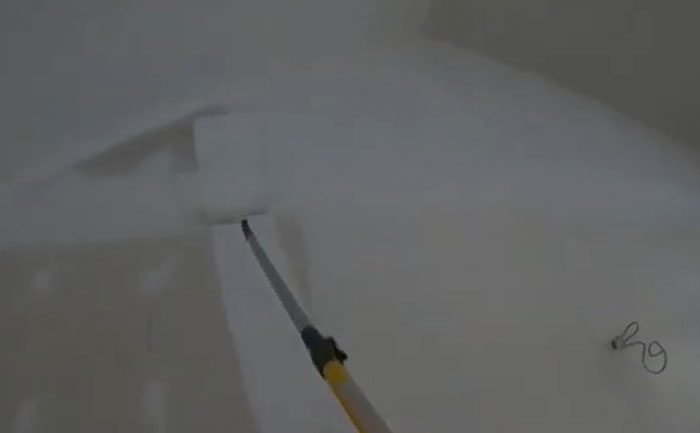
Generally speaking, a pair of coats of drywall primer is recommended in order to achieve an even base coat. However, this does depend on the amount of water or moisture present in the area being primed.
More coats may be needed if there is a lot of moisture present to protect the drywall from peeling paint in the future. Additionally, depending on the type of wall being primed (plaster or wood), additional coats may be needed if those particular substrates require them due to their porosity or absorbency rate.
Does Drywall Primer Need Two Coats?
Yes, two coats of drywall primer are generally suggested to ensure an even foundation coat before painting.
In some cases where high levels of moisture or water content exist within a space, more than two coats may be necessary to defend against peeling paint in the future.
This also applies if you’re using a different substrate material, such as plaster or wood, which requires additional coating due to their absorbency rate or porosity level, etc.
What Is The Best Primer To Use On Interior Walls?
When selecting a primer for interior walls, look for a quality product with good coverage qualities that will provide an even base coat for your topcoat paint finish.
A primer can be found in both oil-based and latex varieties, with each offering different benefits. Oil-based products typically have better sealing capabilities, while latex-based products tend to have better adhesion qualities when applied over drywall surfaces.
However, both offer excellent coverage when applied properly according to manufacturer instructions & recommendations, so it really depends on what type & finish you’re looking for ultimately.
What Primer Should I Use On Painted Walls?
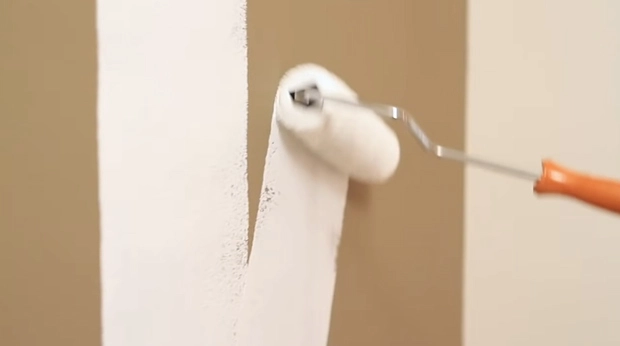
When choosing a primer for painted walls, you should select one that is specifically formulated as an interior latex or latex, or acrylic blend product.
These types of primers are designed to enhance adhesion between existing latex paints and new coatings being applied over them. For best results, apply one coat of oil-based primer before applying an acrylic latex finish coat over previously painted surfaces.
In addition to improved adhesion properties, this method may also help to improve color uniformity on your walls and create a smoother finish overall.
Closing Determination
Drywall primers and regular primers each have their own unique advantages when preparing walls for painting projects. Drywall is best suited for unpainted drywalls, while regular primers are ideal for previously painted walls needing another coat of paint.
Combining both types can also help ensure maximum coverage and adherence before the final topcoat application resulting in a professionally finished look that stands out from amateur artistry.
Whether you’re repainting an entire room or just touching up the trim around windows and doors, understanding the specific characteristics and benefits associated with each type of primer will ensure your next painting job looks great.
